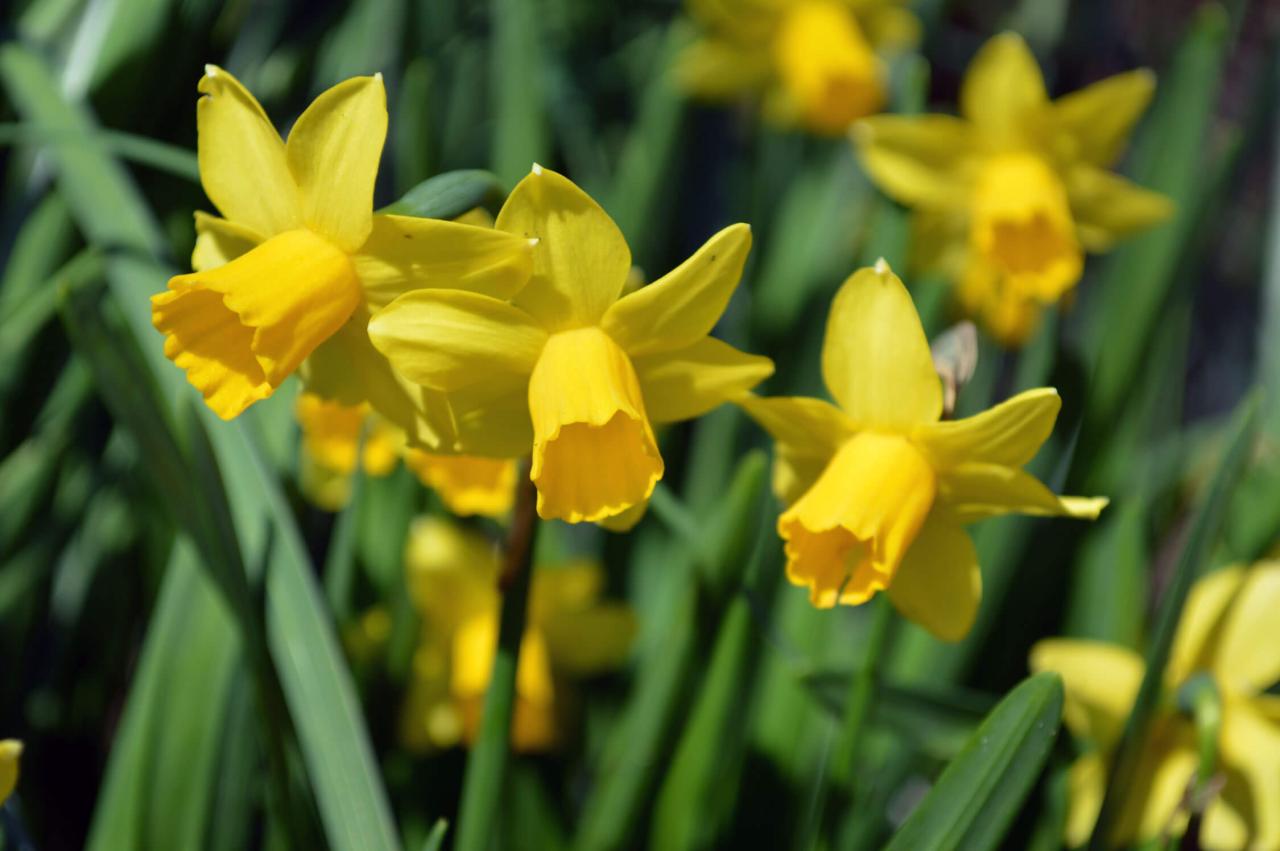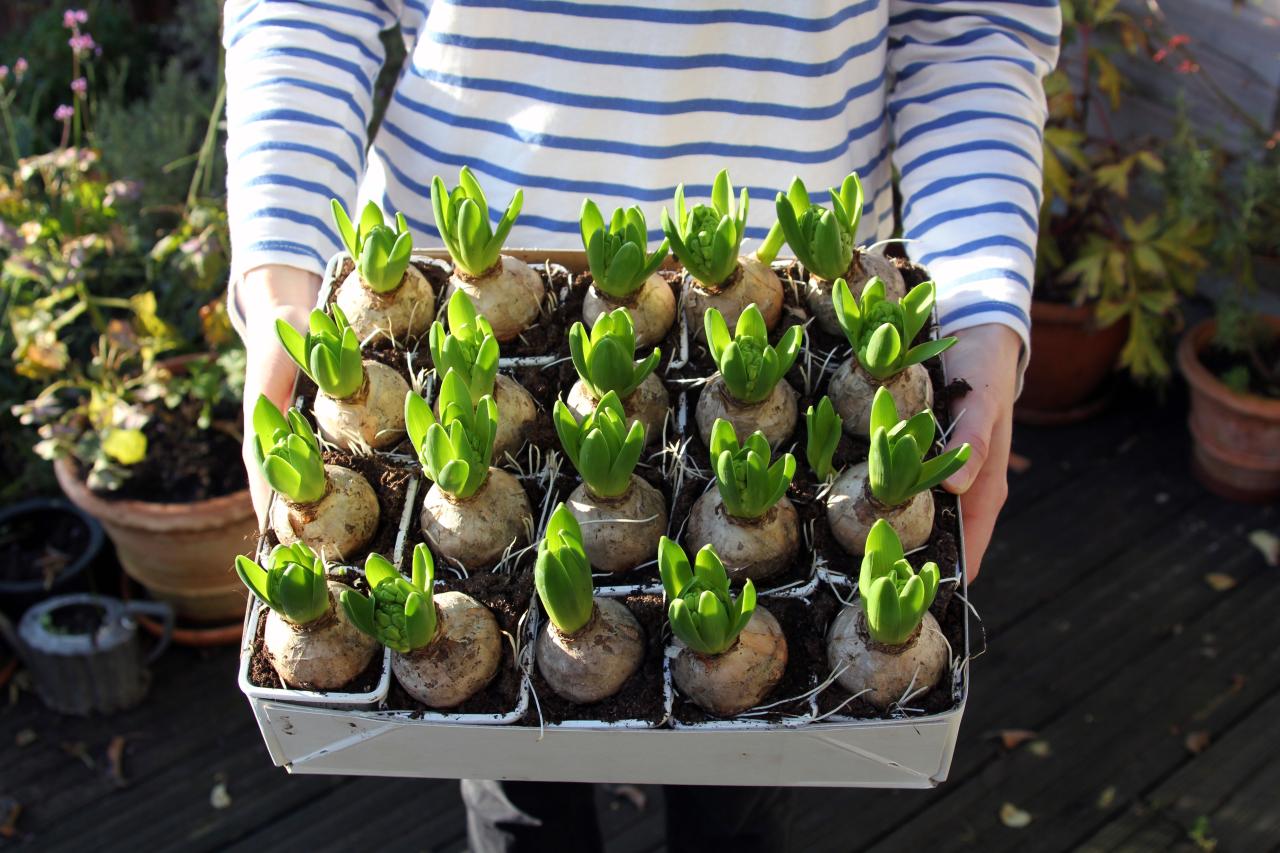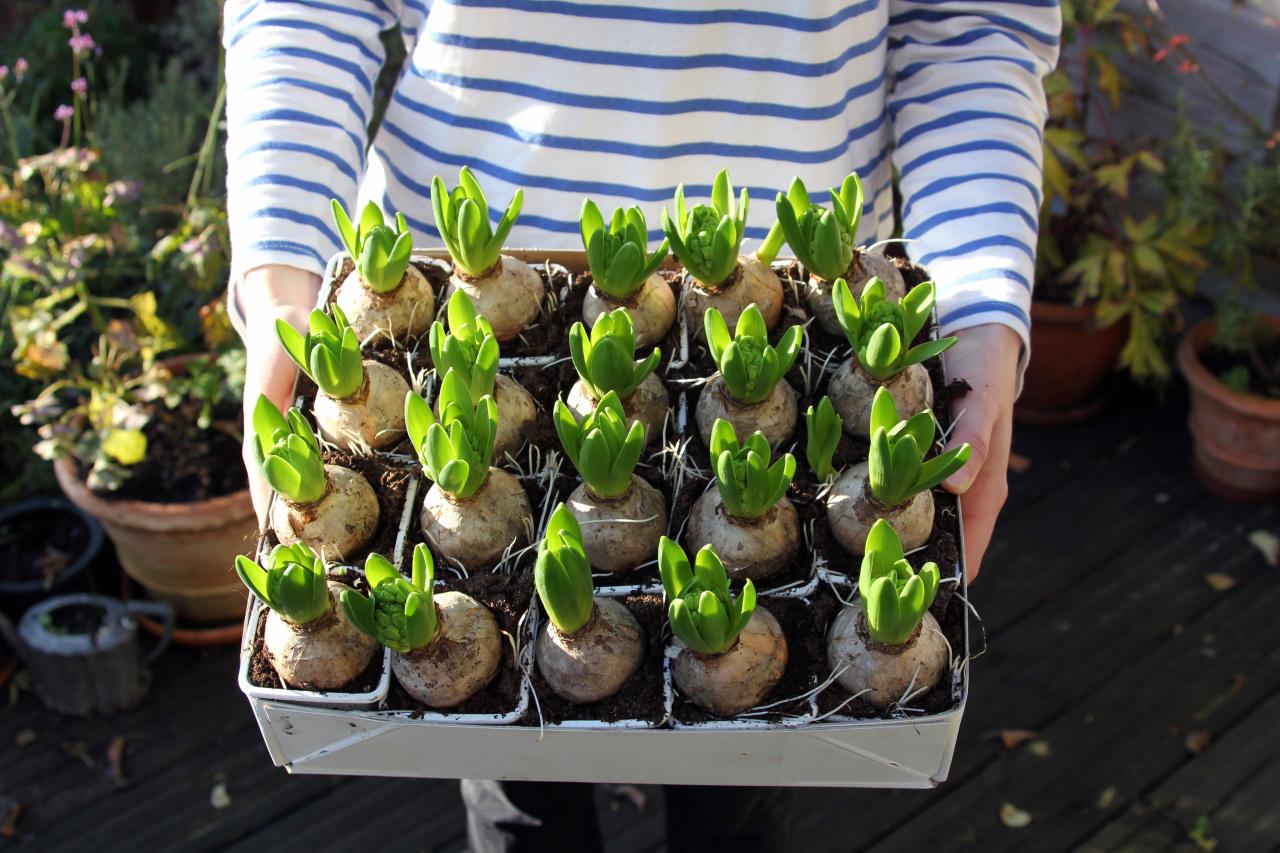How To Plant Spring Flowering Bulbs In Fall Without Fuss: Imagine a vibrant tapestry of color blooming in your garden come springtime, a symphony of tulips, daffodils, and hyacinths greeting the warmer days. This enchanting vision is within your grasp, even for those who consider themselves gardening novices.
Fall is the ideal time to plant spring-flowering bulbs, offering a simple yet rewarding gardening experience. By planting now, you can reap the benefits of beautiful blooms next spring, and with our guide, you’ll discover that the process is far easier than you might think.
Planting bulbs in the fall allows them to establish a strong root system before the winter chill sets in. This deep-rooted foundation ensures vigorous growth and stunning blooms when spring arrives. Furthermore, planting in fall often coincides with cooler temperatures and ample moisture, creating an optimal environment for bulb development.
You’ll be amazed at how effortlessly these bulbs transform your garden into a breathtaking spectacle.
Introduction
Planting spring-flowering bulbs in the fall is a rewarding practice that brings a vibrant burst of color to your garden come spring. By planting bulbs in the fall, you are essentially giving them a head start, allowing them to establish roots and prepare for blooming in the warmer months.
This method offers numerous advantages, making it a popular choice among gardeners.
Benefits of Planting Bulbs in Fall
The act of planting bulbs in fall provides several benefits:
- Early Spring Blooms:Bulbs planted in fall will emerge and bloom earlier in the spring, adding a welcome splash of color to your landscape before other plants have begun to grow. This is because they have had time to establish roots and store energy over the winter months.
- Less Competition:Planting bulbs in the fall allows them to develop a strong root system before other plants start to compete for nutrients and water in the spring. This helps ensure healthy growth and abundant blooms.
- Cooler Temperatures:Fall planting is ideal for bulbs as the cooler temperatures and moist soil conditions promote root growth and development. This allows them to establish themselves before the harsh winter arrives.
- Convenience:Planting bulbs in the fall can be less time-consuming and stressful than planting them in the spring, when you are likely juggling other gardening tasks. It also allows you to enjoy the beauty of your garden in the spring without having to rush to plant bulbs.
The Joy of Spring Blooms
The emergence of spring-flowering bulbs in the garden is a joyous occasion, signaling the arrival of warmer weather and the renewal of nature. Their bright colors and fragrant blossoms bring a sense of cheer and vibrancy to any landscape.The beauty of spring bulbs is not limited to their visual appeal.
Their sweet fragrances, attracting bees and butterflies, contribute to the overall enjoyment of your garden. Spring-flowering bulbs offer a diverse range of colors, shapes, and sizes, allowing you to create a stunning and personalized display that reflects your individual taste and style.
Choosing the Right Bulbs

Selecting the right bulbs is crucial for a successful spring display. Consider your climate, soil conditions, and the desired bloom time when making your choices.
Bulb Types and Blooming Times
The following is a list of popular spring-flowering bulbs, categorized by their blooming times:
- Early Spring Bloomers:These bulbs emerge first, bringing color to the garden before most other plants. Examples include:
- Snowdrops (Galanthus):Small, white, bell-shaped flowers that appear in late winter or early spring. They are known for their resilience and ability to thrive in shady conditions.
- Crocuses (Crocus):Small, cup-shaped flowers in a variety of colors, including purple, yellow, and white. They are a popular choice for naturalizing in lawns.
- Winter Aconite (Eranthis hyemalis):Small, yellow, buttercup-like flowers that appear in late winter or early spring. They prefer moist, well-drained soil.
- Mid-Spring Bloomers:These bulbs provide a vibrant display of color in the middle of spring. Examples include:
- Daffodils (Narcissus):Trumpet-shaped flowers in a wide range of colors, including yellow, white, and orange. They are known for their fragrance and hardiness.
- Tulips (Tulipa):Cup-shaped flowers in a vast array of colors and shapes. They are a popular choice for bedding and containers.
- Hyacinths (Hyacinthus):Fragrant, bell-shaped flowers in a variety of colors, including purple, pink, and white. They are best planted in well-drained soil.
- Late Spring Bloomers:These bulbs bring a final burst of color to the spring garden. Examples include:
- Allium (Allium):Ornamental onions with globe-shaped flower heads in shades of purple, pink, and white. They attract pollinators and add texture to the garden.
- Fritillaria (Fritillaria):Bell-shaped flowers in a variety of colors, including purple, yellow, and orange. They are known for their unique appearance and fragrance.
- Lily of the Valley (Convallaria majalis):Small, white, bell-shaped flowers that grow in clusters. They are known for their sweet fragrance and ability to spread.
Climate and Soil Considerations
Choosing bulbs that are suitable for your climate and soil conditions is essential for successful growth.
- Hardiness Zones:Bulbs are classified by their hardiness zones, which indicate the range of temperatures they can tolerate. Check the hardiness zone for your region and select bulbs that are suitable for your climate.
- Soil Type:Most bulbs prefer well-drained soil. If your soil is heavy clay, amend it with compost or sand to improve drainage. Avoid planting bulbs in areas with poor drainage, as this can lead to rot.
- Sunlight Requirements:Most bulbs require at least six hours of sunlight per day. Choose a planting location that provides adequate sunlight for the specific bulbs you select.
Preparing the Planting Site
Choosing the right spot for your spring-flowering bulbs is crucial for their success. Consider factors like sunlight exposure and soil type to ensure optimal growth conditions.
Soil Amendment
Before planting, it’s essential to prepare the soil to create a suitable environment for your bulbs. Amending the soil with organic matter, such as compost or aged manure, can improve its structure, drainage, and nutrient content.
Planting spring flowering bulbs in the fall is a simple way to add vibrant color to your garden come springtime. Just like the careful cultivation of a Bonsai tree requires patience and precision, planting bulbs involves choosing the right location, depth, and spacing for optimal growth.
With a little planning, you can enjoy a stunning display of blooms next year.
- Compost is an excellent choice for improving soil structure, aeration, and water retention. It provides essential nutrients for bulb growth.
- Aged manure adds organic matter and nutrients to the soil, enhancing its fertility.
Drainage
Good drainage is essential for bulb health. Bulbs can rot if they sit in waterlogged soil. Ensure your planting site has adequate drainage to prevent this.
- Test drainage by digging a hole about 12 inches deep and filling it with water. If the water drains away within an hour, your soil has good drainage.
- If the water remains for longer, you may need to improve drainage by adding compost or amending the soil with a layer of gravel or sand.
Planting the Bulbs
Planting bulbs is a straightforward process, but understanding the correct depth and spacing for each type is crucial for optimal growth and flowering.
Bulb Planting Depth
The general rule of thumb for planting depth is to plant the bulb at a depth that is two to three times the height of the bulb.
- For example, a tulip bulb that is 2 inches tall should be planted 4 to 6 inches deep.
- Smaller bulbs, like crocus or grape hyacinth, can be planted at a shallower depth of 2 to 3 inches.
Bulb Spacing, How To Plant Spring Flowering Bulbs In Fall Without Fuss
The spacing between bulbs depends on the type and size of the bulb.
- Larger bulbs, like tulips and daffodils, should be spaced 6 to 8 inches apart.
- Smaller bulbs, like crocuses and hyacinths, can be planted closer together, about 3 to 4 inches apart.
Positioning the Bulbs
When planting bulbs, ensure the pointed end, or the top, is facing upwards.
- The root end of the bulb should be facing downwards.
- Place the bulb in the hole, cover it with soil, and gently pat it down.
- After planting, water the area thoroughly.
Aftercare
Once you’ve planted your spring-flowering bulbs, it’s time to give them the care they need to thrive. A little attention now will ensure beautiful blooms come springtime.
Watering and Fertilizing
After planting, water your bulbs thoroughly to settle the soil around them. This is especially important if you’ve had a dry fall. Once established, most bulbs will rely on natural rainfall. However, during prolonged dry spells, especially during the first year after planting, provide supplemental watering.
You can fertilize your bulb bed in early spring, just as new growth emerges. Use a balanced fertilizer, such as 10-10-10, to provide the nutrients your bulbs need for healthy growth and abundant blooms. Avoid fertilizing in late fall or winter, as this can encourage new growth that might be damaged by frost.
Protecting Bulbs from Frost and Pests
While most bulbs are hardy and can withstand winter temperatures, a layer of mulch can provide extra protection against frost. Mulch also helps to regulate soil temperature and moisture, creating a more favorable environment for your bulbs. Use organic materials like shredded bark, leaves, or compost, and apply a layer of 2-3 inches thick.
Pests like voles and squirrels can be a nuisance to bulb gardens. They love to dig up and eat bulbs, especially tulips and hyacinths. To deter these pests, you can use a mesh wire cage or a layer of chicken wire placed over the planting area.
Alternatively, you can plant bulbs in containers, making them inaccessible to pests.
Maintaining a Healthy Bulb Bed
Keep the bulb bed free of weeds throughout the winter. Weeds compete with your bulbs for nutrients and moisture, hindering their growth. Regularly remove any weeds that emerge, especially those that are growing close to the bulbs.After your bulbs have finished blooming in spring, allow the foliage to die back naturally.
The foliage helps to replenish the bulbs with energy for the following year’s bloom. Once the foliage has turned brown and withered, you can cut it back to the ground.
Enjoying the Spring Blooms

After the long wait, your spring-flowering bulbs will finally begin to sprout, bringing a burst of color to your garden. The anticipation is almost as exciting as the blooms themselves. But now that they’re emerging, it’s time to give them a little extra care to ensure they thrive and display their full beauty.
Caring for Emerging Bulbs
As your bulbs start to emerge, they’ll need some gentle care to encourage healthy growth.
- Water Regularly:During the spring, bulbs need consistent moisture to support their growth. Water them deeply but infrequently, allowing the soil to dry slightly between waterings. Avoid overwatering, which can lead to rot.
- Feed with Fertilizer:Once the foliage emerges, you can provide a boost of nutrients with a balanced fertilizer specifically formulated for bulbs. This will help them produce larger and more vibrant blooms.
- Mulch for Moisture Retention:A layer of organic mulch, such as shredded bark or compost, can help retain moisture in the soil, reducing the need for frequent watering and protecting the bulbs from temperature fluctuations.
Supporting Tall Flower Stalks
Some bulb varieties, such as tulips and daffodils, produce tall flower stalks that can easily bend or break in windy conditions.
- Use Stakes:For taller varieties, consider using stakes to support the flower stalks. Insert the stakes into the ground near the base of the plant and gently tie the flower stalk to the stake with soft twine or garden ties. This will prevent the stalks from flopping over.
- Cage Support:For a more decorative and sturdy support, use a wire cage around the plant. This provides a framework for the flower stalks to grow through, preventing them from bending.
Enjoying the Beauty of Spring Blooms
Your spring-flowering bulbs will reward you with a vibrant display of color and fragrance.
- Admire the Blooms:Take time to appreciate the beauty of your bulbs in full bloom. Walk through your garden, enjoy the scent, and capture the beauty with photographs.
- Cut Flowers for Arrangements:Cut some of the blooms to create stunning arrangements for your home. This will extend the enjoyment of the flowers and allow you to appreciate their beauty indoors.
- Share the Beauty:Share the joy of your spring bulbs with friends and neighbors. Cut some blooms to share, or invite them to visit your garden and experience the beauty firsthand.
Ultimate Conclusion
Planting spring-flowering bulbs in the fall is a rewarding endeavor that brings joy and color to your garden each spring. By following these simple steps, you can enjoy a vibrant display of blooms without the fuss. As you watch your bulbs sprout and flourish, you’ll feel a sense of accomplishment and delight knowing that your fall efforts have yielded such beauty.
So, grab your bulbs, get your hands dirty, and embark on this rewarding gardening journey.
Quick FAQs: How To Plant Spring Flowering Bulbs In Fall Without Fuss
What if I plant my bulbs too deep?
Planting too deep can delay flowering or prevent the bulb from emerging. The general rule is to plant bulbs at a depth of twice the height of the bulb. For example, if a bulb is 2 inches tall, plant it 4 inches deep.
Can I plant bulbs in containers?
Absolutely! Containers provide a convenient way to enjoy spring blooms. Choose a pot with drainage holes and use a well-draining potting mix. Plant the bulbs according to their recommended depth and spacing.
What if I miss the ideal planting time?
While fall is the optimal time, you can still plant bulbs in early winter, especially in warmer climates. Just make sure the ground isn’t frozen.
How do I know which bulbs are suitable for my area?
Check the bulb packaging or consult with a local nursery. They can advise on bulbs that thrive in your specific climate and soil conditions.

